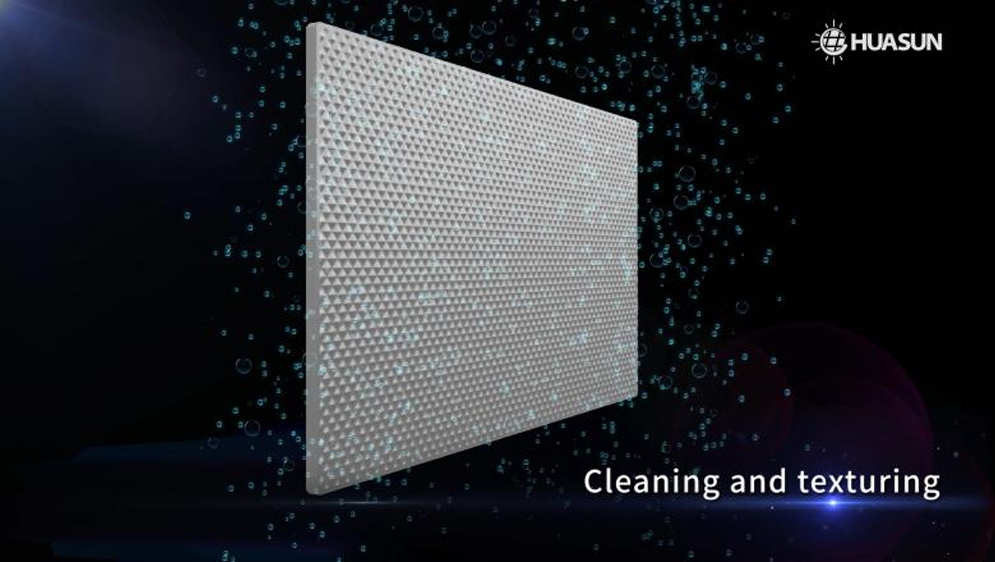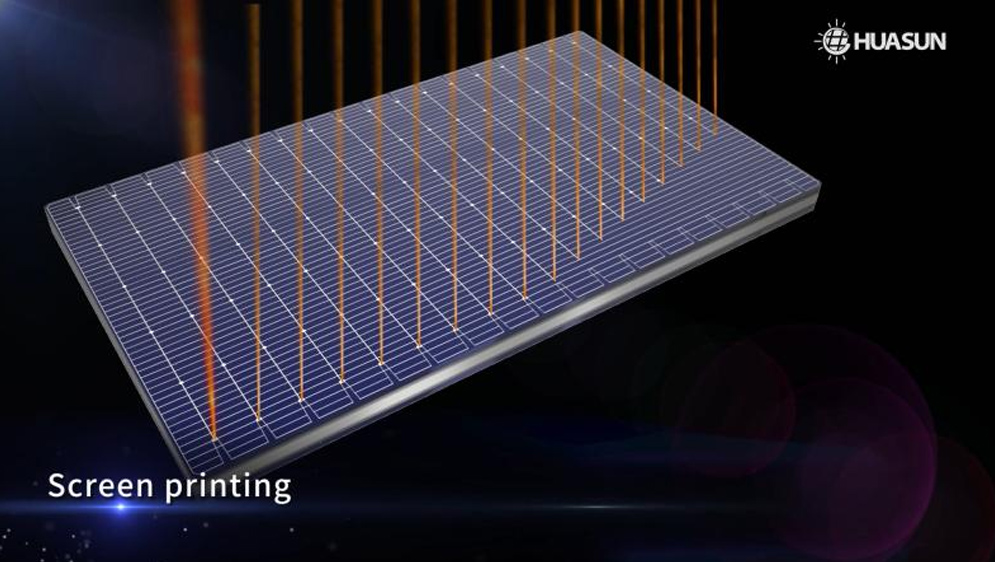en
Heterojunction (HJT) solar cells boast exceptional photovoltaic conversion efficiency. At Huasun, the average efficiency of double-sided microcrystalline HJT 210mm solar cells has reached 26.15% in mass production, with peak efficiency hitting 26.50%, and these figures are constantly being updated. But how exactly are HJT solar cells crafted? You might assume it's a highly intricate process, yet it's surprisingly straightforward!
The journey of HJT solar cell production commences with silicon wafers and encompasses just 4 manufacturing steps. Dive into the video below, and without setting foot in the workshop, you can delve into the streamlined process of HJT solar cell creation.
Upon closer inspection, you'll notice Huasun's innovative approach of half-cutting ingots before slicing wafers. This significantly minimizes losses incurred during subsequent slicing, while optimizing edge utilization and thinning silicon wafers, thereby substantially enhancing silicon material efficiency.
Now, let's dissect the four meticulous manufacturing steps of HJT solar cells:
Step 1: Cleaning & Texturing

N-type monocrystalline silicon wafers are immersed in a specific concentration of alkaline solution, meticulously controlled to etch fine, uniform pyramid-shaped structures along specific crystal orientations.
Step 2: Bifacial PECVD (Plasma-enhanced Chemical Vapor Deposition)

Under vacuum conditions, gas-phase reactants carrying elements for thin films react chemically on the substrate surface through particle bombardment or thermal decomposition, forming amorphous silicon films. Introducing double-sided microcrystalline technology enhances light transmission, reduces doping layer resistance, and ultimately boosts current density.
Step 3: Bifacial PVD (Physical Vapor Deposition)

Transparent Conductive Oxide (TCO) particles are deposited onto the substrate under vacuum and high-pressure conditions via PVD or evaporation, forming TCO films. These films offer dual functions of optical transparency and electrical conductivity, creating an optical trap structure and diminishing surface reflectance.
Step 4: Bifacial Screen Printing
Paste is intricately applied onto both sides of the silicon wafer through specific patterns, creating finely detailed circuitry to extract collected currents from the solar cells.

With just 4 steps, Huasun’s HJT solar cells adopt a symmetrical structure on both sides, enabling dual-sided power generation. Conventional Huasun HJT modules achieve bifaciality of up to 90%, while ultra-high ones can reach 97%, providing additional benefits for customers. It’s noteworthy that the temperature of the entire manufacturing process of HJT solar cells remains under 200°C, making it environmentally friendly with lower carbon emissions.

From manufacturing to power generation, Huasun fully harnesses the green essence of its HJT products, constantly advancing towards a greener future by streamlining manufacturing processes and increasing energy yield. In doing so, it contributes significantly to achieving the zero-carbon objective.